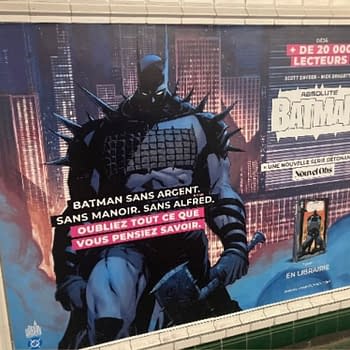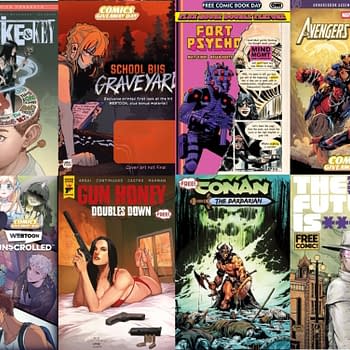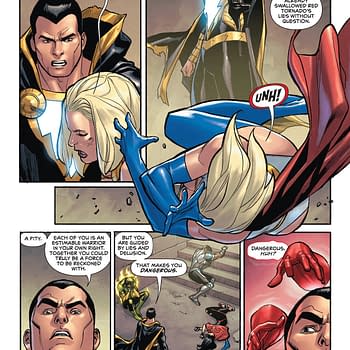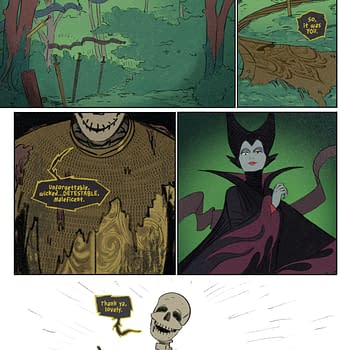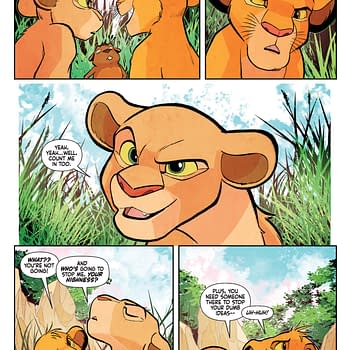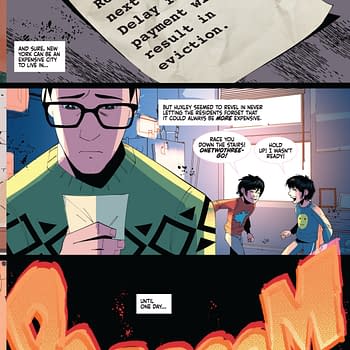Posted in: Comics | Tagged: book festival, comic, edinburgh, Glyn Dillon, Jon McNaught, stripped
Glyn Dillon And Jon McNaught, Stripped
Gary Gray, our Senior Scottish Correspondent, writes;
For the next talk at the Stripped stand of the Edinburgh Book Festival it was appropriate that it was wholly different from Rob Davis and Martin Rowson's discussion of heavyweight literary adaptation. Instead we were in the world of deeply personal work, talking to Glyn Dillon and Jon McNaught. And it was kind of special that Martin Rowson and Robbie Morrison both creators of entirely different works to Dillon and McNaught's attended this talk. That was one of the themes of the weekend where there were no boundaries at all between creators with at least one creator in the audience for all of the talks. Everyone was there to celebrate comics in all their many splendored beauty.
First impressions were that McNaught and Dillon are the two shyest and humblest talkers of the weekend. Which is kind of surprising on the back of them having won major awards, the Prix Révélation, The Best Newcomer Award at Angouleme for McNaught and Prix Spécial du Jury also at Angouleme for Dillon (as well of loads of other awards). Personally I always like it more when true talents are so humble and while their talk may not have been full of printable quotes as they talked us through both their wonderful books it made it more personal and affecting.
Chair Doug Wallace of NoBrow kicked things off with asking McNaught to talk us through his book Dockwood, to which he described it as an ordinary day in autumn in a seaside town that follows a kitchen porter in an old people's home and a paper boy doing his round after school. Funnily enough these are jobs that McNaught has done. He discussed that his inspiration is of taking readers through environments and a medley of different things creating pages of tiles that look at the minutiae of small things. Now while this may sound like utterly dry boring material, McNaught creates a beautifully realised vivid work with a severely restricted palette that is really deserving of your time.
McNaught was then asked who his influences are and Chris Ware, Seth and Daniel Clowes were mentioned, and that he feels starstruck by the feedback and support of he gets from people like that, especially Ware who said about Dockwood "There are few younger comics artists with whom I feel a genuine aesthetic kinship, but the radiant and glowing Dockwood is Jon McNaught's loveliest argument yet for the beauty of just being alive. It's a gem." McNaught's process was then discussed and he revealed that he is working as a print making instructor and all of the art is created in the same painstaking process.
The discussion then moved over to Glyn Dillon who revealed that one of his friends described The Nao of Brown as a "200 page love letter to my wife". Now I've read The Nao of Brown a few times and that thought just adds an extra dimension to an already powerful work. The book follows an aspiring illustrator and we join her when her life is a mess with Nao suffering pure OCD that is internalised where she can keep it a secret and comics being the perfect medium to show her internal side. The reference to the book being a love letter is that Dillon's wife suffered OCD in her teens. Although Dillon has obviously talked about this many times it still sounded so utterly personal. Thankfully the discussion moved back to much safer territory for Dillon where Wallace asked him about his process where he said he drew the linework, scanned it into the computer, and printed it back out and did a watercolour version for every colour. Then finally scanning in and combining them in Photoshop. An utterly laborious and time consuming process, which Dillon said he had to do as he was shit scared and didn't know how to handle watercolour at the start of the process.
Dillon also took us through some of the sequences in the book, that were revealed to have been real things he and his wife had experienced such as the Kite festival in France that, and also the surreal experience of the toy shop that features in the book. That actually exists (under a different name) with the toy that he drew in the book, then being made for real and then being sold at the real shop after the release of the book.
McNaught then took us through his process of creating his pages where each colour has to be added layer by layer in a print, using techniques such as linocut. Both artists using entirely different techniques but the level of craft was astonishing and makes me want to go back and read both works again for a greater understanding and appreciation of.







